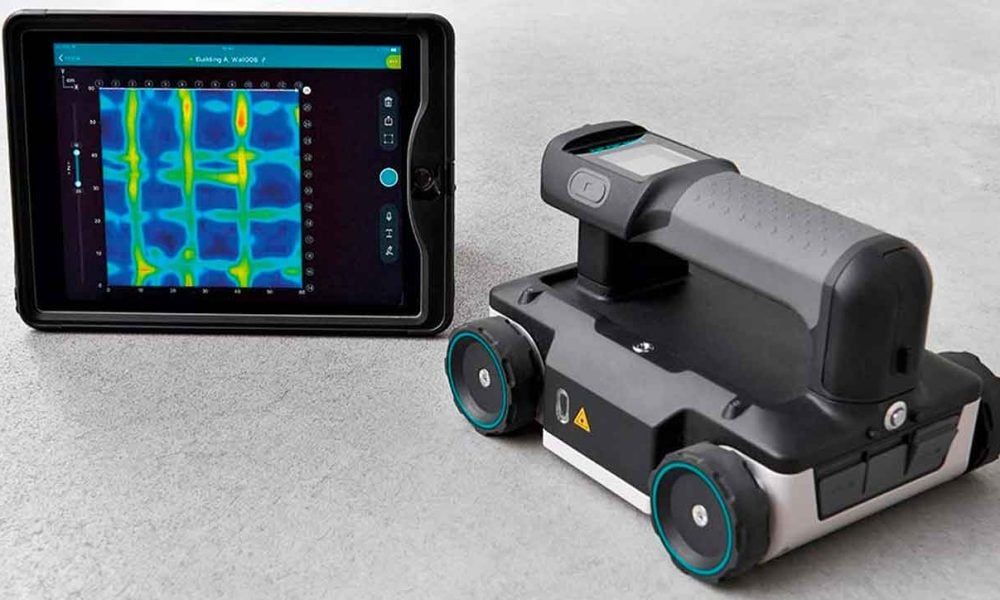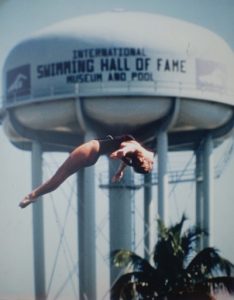Ground Penetrating Radar – This allows contractors to “see” the inside of pool structures. GPR systems can be used to locate steel reinforcement and determine the thickness of concrete. GPR can also be used to locate elements within framed buildings and pipes. These systems are typically priced over $12,000 but when prorated across multiple jobs, they become a negligible cost.
What is ground penetrating radar?
Ground Penetrating Radar uses radar pulses in order to visualize the subsurface. It is a nondestructive, non-intrusive method that is used in many fields including archaeology and geology. GPR’s primary purpose is to map and identify subsurface features or anomalies without needing to dig.
What Does It Do?
GPR uses electromagnetic pulses to emit short pulses into the ground. These radar pulses interact with materials and structures in the subsurface. Some of the energy is returned to the surface as the waves interact with boundaries between materials. GPR receives the reflections and then processes them to produce a detailed picture of the subsurface. GPR provides valuable information about utilities, subsurface mapping and construction without needing to dig.
GPR for Pool Builders & Contractors
Today, technology continues to evolve. Ground Penetrating Radar is a useful tool that pool builders and contractors can use in many aspects of their jobs. GPR is a valuable tool for pool builders and contractors.
-
Locating Utilities
-
Subsurface Anomalies – Identifying them
-
Mapping soil stratigraphy
-
Detecting Void Spatial Spaces
-
Quality Control
-
Compliance with Regulations
-
Time and Cost Savings
Use of GPR for Non Destructive Testing
There are many intelligent reasons why you should use a ground penetrating radio to scan the pool shells. GPR is an effective way to find out what’s happening inside the concrete without needing to drill cores, or even demolish it. Radar can be used to determine the depth and rebar schedule of concrete.
Use of Ground Penetration Radar when Remodeling Swimming Pools
Contractors will find it invaluable to be able precisely to locate the location of the reinforcing metal. It is important to know the exact location of the steel when coring a shell, adding plumbing, or coring samples. A core bit that costs $500 can be damaged by hitting a rebar. A handheld drill can bind and kick back, causing the thumb to be broken.
After removing the plaster, scanning over the shell will determine definitively if the shotcrete is sufficiently covered. The pool can then be “flashed”, or covered with more shotcrete, if it is not enough. As the interior dimensions change, you will also need to replace your coping and tiles. We have disclaimers about the thickness of shotcrete in my firm’s contracts for pool remodeling. We will scan your shell at no cost, but if the coverage is inadequate, we will issue a change order for additional shotcrete, and to adjust the tile, coping and fittings. Consider this a possible profit center. You can show the owner the depth and location of the rebar.
GPR companies charge between $500 and 600 for an hour-long visit. It is easy to see how fast a GPR can pay for itself. It will start to earn you money after a few months. You can get a Proceq Gp8800 for about $12,000, plus the price of an iPad.
Photo Credits: Proceq
The post Pool Contractors can use Ground Penetrating radar as a form of X-ray vision first appeared on PoolMagazine.com.







